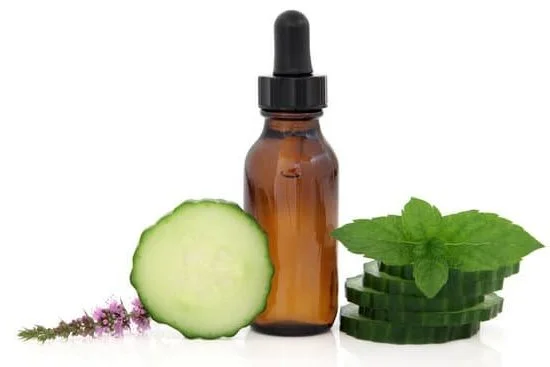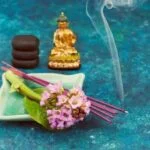Aromatherapy has been used for centuries as a natural way to promote health and well-being. But what oils are used in aromatherapy, and how do they work? In this article, we will explore the different types of essential oils commonly used in aromatherapy and their specific benefits.
Essential oils are the foundation of aromatherapy, and each type offers unique properties that can be utilized to improve physical, emotional, and mental health. From lavender for relaxation to eucalyptus for respiratory support, these potent plant extracts have a wide range of therapeutic uses. Understanding the diverse benefits of essential oils is key to integrating them into your daily routine.
In the following sections, we will take an in-depth look at some of the most popular essential oils used in aromatherapy. We’ll dive into the calming properties of lavender, the respiratory benefits of eucalyptus, the alertness and focus-boosting effects of peppermint, as well as other essential oils’ uses for skin care, mood enhancement, and more.
We’ll also explore how to safely blend essential oils for specific purposes and discuss important safety considerations when using them. Whether you’re new to aromatherapy or looking to deepen your understanding, this article will provide valuable insights into the world of essential oils and their potential benefits.
Understanding the Different Types of Essential Oils
Aromatherapy revolves around the use of essential oils, which are concentrated liquids extracted from plants. These oils have been used for centuries to promote physical and emotional well-being. Understanding the different types of essential oils is essential to harness their various benefits.
Single-Note Essential Oils
Single-note essential oils are derived from a single plant source, such as lavender, eucalyptus, or peppermint. Each oil has its distinct properties and can be used individually for specific purposes such as relaxation, respiratory health, or alertness.
Blended Essential Oils
Blended essential oils are a combination of two or more single-note oils. Blending allows for the creation of more complex scents and can also enhance therapeutic properties. For instance, blending lavender with chamomile can create a calming and soothing aroma perfect for relaxation and sleep.
Citrus Essential Oils
Citrus essential oils, such as lemon, orange, and bergamot, are known for their mood-enhancing properties. Their uplifting and energizing fragrances are often used in aromatherapy to alleviate stress and anxiety. Additionally, citrus oils may also act as natural disinfectants due to their high anti-microbial properties.
Understanding the different types of essential oils is crucial when incorporating aromatherapy into daily life. Whether using single-note or blended essential oils, each type offers various physical and emotional benefits and can be utilized in different ways to achieve overall wellness.
Lavender Essential Oil and Its Calming Properties
Lavender essential oil is one of the most popular and versatile oils used in aromatherapy. Known for its calming and relaxing properties, it is often used to promote a sense of well-being and alleviate stress and anxiety. This essential oil is derived from the lavender plant through steam distillation, making it a pure and natural remedy for various physical and emotional ailments.
Many people use lavender essential oil as a natural sleep aid, either by diffusing it in the bedroom or applying a few drops to the pillow or bedding before bedtime. Its soothing aroma can help induce a state of relaxation, preparing the body and mind for restful sleep. Additionally, lavender essential oil has been found to reduce symptoms of mild anxiety and depression when used as part of an aromatherapy routine.
A study published in The Journal of Alternative and Complementary Medicine found that inhaling lavender essential oil for 15 minutes significantly reduced cortisol levels in the body, indicating a decrease in stress. This makes it an excellent choice for individuals looking to manage their stress levels using natural methods. Overall, lavender essential oil is a valuable tool in promoting mental wellness and achieving emotional balance through aromatherapy.
| Lavender Essential Oil Properties | Benefits |
|---|---|
| Calming aroma | Promotes relaxation and reduces stress |
| Antioxidant and anti-inflammatory properties | Aids in skin healing and provides relief from minor burns or insect bites |
| Sleep aid | Improves sleep quality and helps with insomnia |
Eucalyptus Essential Oil for Respiratory Health
Eucalyptus essential oil is known for its powerful benefits in supporting respiratory health. It has been used for centuries as a natural remedy for coughs, colds, and other respiratory conditions. The oil is derived from the leaves of the eucalyptus tree, which is native to Australia. Its main active ingredient, cineole, has been found to have anti-inflammatory and decongestant properties that can help clear the airways and reduce symptoms of respiratory issues.
Research has shown that inhaling eucalyptus essential oil can help improve symptoms of bronchitis, sinusitis, and other respiratory infections. Its antimicrobial properties also make it effective in fighting off the bacteria and viruses that can cause these conditions. Additionally, eucalyptus oil is often used in steam inhalation treatments to help alleviate congestion and promote easier breathing.
For those looking to incorporate eucalyptus essential oil into their aromatherapy routine for respiratory health, there are several ways to do so. Diffusing the oil in a room or adding a few drops to a warm bath can help create an environment that supports healthy breathing. However, it’s important to note that eucalyptus oil should not be ingested orally and should always be diluted with a carrier oil when applied topically to avoid skin irritation.
The use of eucalyptus essential oil should also be approached with caution, especially for individuals with asthma or sensitive skin. It’s always best to consult with a healthcare professional before using this or any other essential oils, especially if you have underlying health conditions or are pregnant. Overall, when used safely and correctly, eucalyptus essential oil can be a valuable tool in maintaining optimal respiratory function through aromatherapy practices.
| Benefits | Methods of Use |
|---|---|
| Supports respiratory health | Diffusing in a room |
| Antimicrobial properties | Adding to a warm bath |
| Alleviates congestion | Diluting with a carrier oil for topical application |
Peppermint Essential Oil to Improve Alertness and Focus
Peppermint essential oil is one of the most popular oils used in aromatherapy due to its refreshing and invigorating properties. This essential oil is known for its ability to improve alertness and enhance focus, making it a great option for those looking for a natural way to stay mentally sharp throughout the day. Peppermint oil can be used in various ways to reap its benefits, such as through diffusion, topical application, or even inhalation.
Here are some specific ways in which peppermint essential oil can help improve alertness and focus:
- Diffuse a few drops of peppermint oil in your workspace to promote mental clarity and concentration.
- Add a drop or two of peppermint oil to your shower or bath to help wake up your senses and feel more focused.
- Create a DIY roller blend with peppermint oil, applying it to pulse points like the wrists or temples when you need an extra boost of alertness during the day.
It’s important to note that while peppermint essential oil has many benefits, it should be used with caution, especially for those with sensitive skin or respiratory conditions. Always dilute peppermint oil properly before applying it topically, and consult with a healthcare professional if you have any concerns about using this essential oil.
By following safety guidelines and using peppermint essential oil responsibly, you can enjoy its stimulating effects and contribute to improved focus and mental clarity in your daily life.
Tea Tree Essential Oil for Skin Care and Healing
Tea tree essential oil is a popular choice in aromatherapy for its numerous benefits for skin care and healing. This powerful essential oil is derived from the leaves of the Melaleuca alternifolia plant, which is native to Australia. Tea tree essential oil has been used for centuries by indigenous Australians to treat various skin conditions and wounds due to its potent antiseptic properties.
When it comes to skincare, tea tree essential oil has been found to be effective in treating acne, eczema, and psoriasis. Its anti-inflammatory and antimicrobial properties make it an ideal natural remedy for these common skin conditions. Using tea tree oil as part of a skincare routine can help reduce redness, inflammation, and bacteria on the skin.
In addition to its skincare benefits, tea tree essential oil is also known for its ability to promote wound healing. Its antiseptic properties can help prevent infections in minor cuts, scrapes, and burns. When applied topically, it can aid in the repair and regeneration of damaged skin tissue. Incorporating tea tree essential oil into a first-aid kit can be beneficial for addressing minor injuries effectively.
Moreover, tea tree essential oil has been shown to have antifungal properties that can help combat fungal infections such as athlete’s foot or nail fungus. Its natural antifungal abilities make it a versatile option for overall foot care and maintaining healthy nails.
It’s important to note that while tea tree oil offers these potential benefits, it should always be diluted with a carrier oil before applying it topically to avoid potential irritation or sensitivity reactions. When using any essential oils on the skin, performing a patch test beforehand is highly recommended.
- Skincare benefits
- Wound healing properties
- Antifungal properties
Citrus Essential Oils for Mood Enhancement and Relaxation
Benefits of Citrus Essential Oils
Citrus essential oils like lemon, orange, and lime are known for their invigorating and energizing effects on the mind and body. They have been shown to help alleviate symptoms of anxiety and depression by boosting serotonin levels in the brain. In addition to their mood-enhancing properties, citrus essential oils also possess antibacterial and antifungal qualities that can support immune function when diffused or applied topically.
Popular Uses of Citrus Essential Oils
One popular way to incorporate citrus essential oils into aromatherapy is by using a diffuser. Diffusing these oils in your home or office can help create a positive and uplifting atmosphere while promoting relaxation and reducing feelings of stress. Citrus oils can also be added to homemade cleaning products for their disinfecting properties or used in massage blends to uplift the spirit.
In addition to their emotional benefits, citrus essential oils can also be used as natural air fresheners or added to skincare products for their brightening and clarifying effects on the skin. However, it’s important to note that some citrus essential oils can cause photosensitivity when applied topically, so it’s crucial to use them with caution and avoid sun exposure after application.
Always dilute these oils with a carrier oil before applying them to the skin to minimize any potential adverse reactions.
By integrating citrus essential oils into your aromatherapy practice, you can experience the rejuvenating and calming effects they offer, making them a valuable addition to your wellness routine.
Blending Essential Oils for Specific Purposes
When it comes to using essential oils in aromatherapy, blending different oils can be an effective way to achieve specific purposes. Blending essential oils involves combining two or more oils to create a synergistic effect that enhances the therapeutic benefits of each individual oil. This practice allows for a custom approach to addressing various physical, emotional, and mental concerns.
One common reason for blending essential oils is to create a unique scent that suits individual preferences. By combining different oils, the resulting aroma can be tailored to evoke certain feelings or memories, promote relaxation, or uplift the mood. Additionally, blending oils with complementary properties can enhance their overall effectiveness. For example, combining lavender and chamomile essential oils can create a more potent calming blend, perfect for promoting relaxation and stress relief.
Another purpose for blending essential oils is to address specific health or wellness concerns. Creating blends targeted towards respiratory health, muscle tension relief, immune support, or skin care can maximize the therapeutic benefits of aromatherapy. Blending eucalyptus and peppermint essential oils can effectively alleviate congestion and promote easier breathing during times of respiratory discomfort.
In addition to promoting physical well-being, blending essential oils for emotional and mental support is also common in aromatherapy. Combining citrus essential oils like orange and lemon with uplifting floral scents such as geranium can create a bright and cheerful blend that enhances mood and promotes relaxation.
Whether it’s to boost confidence, improve focus, or reduce anxiety, blending essential oils offers endless possibilities for addressing various emotional and mental needs. Overall, mastering the art of blending requires understanding the properties of different essential oils and experimenting with various combinations to achieve desired outcomes in aromatherapy practice.
Safety Considerations and Precautions When Using Essential Oils
When using essential oils for aromatherapy, it is important to take certain safety considerations and precautions into account to ensure a positive and safe experience. Essential oils are highly concentrated plant extracts, which means that they can be potent and may cause adverse reactions if not used properly. One key safety consideration is to always dilute essential oils before applying them to the skin, as they can be irritating or even cause allergic reactions in some individuals.
Another crucial precaution when using essential oils is to be mindful of any potential interactions with other medications or medical conditions. Some essential oils can interact with certain medications or exacerbate certain health conditions, so it is important to consult with a healthcare professional before using essential oils, especially if you are pregnant, nursing, or have any pre-existing health concerns.
It is also important to store essential oils properly in dark glass bottles away from direct sunlight and heat, as this can cause the oils to degrade and lose their potency over time. Additionally, always keep essential oils out of reach of children and pets, as ingestion of certain essential oils can be toxic. By being attentive to these safety considerations and precautions, individuals can enjoy the therapeutic benefits of aromatherapy while minimizing the risk of adverse effects.
Conclusion and Final Tips for Integrating Aromatherapy Into Daily Life
In conclusion, aromatherapy offers a wide range of benefits for both physical and mental well-being. The use of essential oils, such as lavender, eucalyptus, peppermint, tea tree, and citrus oils, can have a positive impact on various aspects of health. Whether it’s to promote relaxation, improve respiratory health, enhance focus and alertness, or even to benefit skin care and healing, essential oils have proven to be valuable tools in the practice of aromatherapy.
As with any holistic approach to wellness, it is important to exercise caution and follow safety considerations when using essential oils. Diluting oils, performing patch tests prior to use, and being mindful of contraindications are crucial steps in ensuring the safe and effective use of aromatherapy. Additionally, learning how to properly blend essential oils for specific purposes can further maximize their efficacy.
For those looking to integrate aromatherapy into their daily lives, incorporating the use of essential oils into self-care routines can be a simple yet powerful way to promote overall well-being. From using diffusers at home or workspaces to creating personalized oil blends for massage or baths, there are numerous ways to incorporate the benefits of aromatherapy into daily life.
Additionally, seeking guidance from certified aromatherapists or holistic practitioners can provide valuable insights and recommendations for utilizing essential oils effectively. Overall, with proper knowledge and mindfulness in use, aromatherapy has the potential to enhance one’s quality of life in a natural and holistic manner.
Frequently Asked Questions
What Are the Most Popular Aromatherapy Oils?
The most popular aromatherapy oils include lavender, tea tree, peppermint, eucalyptus, and rosemary. These essential oils are widely used for their various therapeutic properties such as relaxation, stress relief, and immune system support. Many people also use citrus oils like lemon and orange for their uplifting and energizing scents.
What Are the 7 Essential Oils?
The seven essential oils that are often considered the most versatile and widely used in aromatherapy are lavender, tea tree, peppermint, eucalyptus, lemon, rosemary, and frankincense. Each of these oils has its own unique scent profile and therapeutic benefits which make them valuable additions to any aromatherapy collection.
What Essential Oils Are Safe for Aromatherapy?
When it comes to essential oils that are safe for aromatherapy use, it’s important to consider factors such as purity, quality, and any preexisting health conditions or allergies. Generally speaking, popular essential oils like lavender, chamomile, tea tree, peppermint, and eucalyptus are considered safe when used properly.
However,, it’s always best to consult with a healthcare professional or certified aromatherapist before using any new essential oil for aromatherapy purposes.

Are you looking for a natural way to improve your health and wellbeing?
If so, aromatherapy may be the answer for you.






